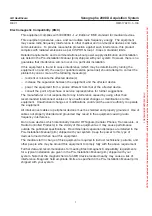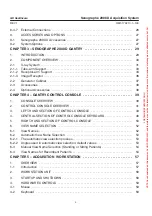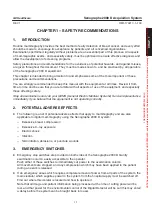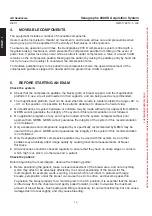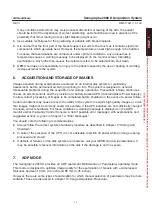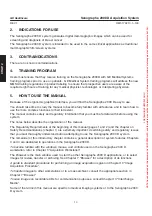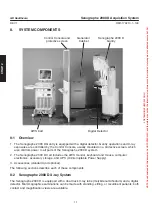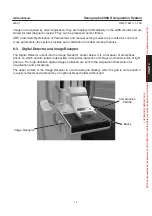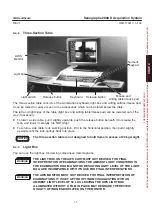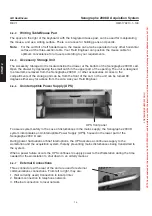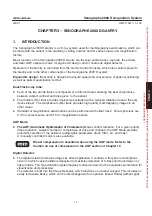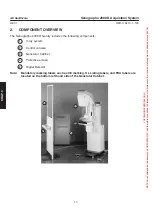
CHAP
. 1
GE Healthcare
Senographe 2000 D Acquisition System
REV 1
OM 5179217–1–100
15
CHAPTER 1 – SAFETY RECOMMENDATIONS
1.
INTRODUCTION
Routine mammography provides the best method of early detection of breast cancer, and every effort
should be made to encourage its acceptance by patients and all concerned organizations.
Examinations performed regularly without problems are an essential part of this process. All aspects
of mammographic exams, and especially safety, must be optimized to ensure effective diagnosis and
allow the development of screening programs.
Safety precautions and recommendations for the avoidance of potential hazards, and against misuse,
are given throughout this document. They must be made known to, and be practised by, all operators
of the Senographe 2000 D equipment.
This chapter is intended to bring attention to and emphasize some of the more important of these
precautions and recommendations.
You are strongly recommended to keep this manual with the equipment at all times. Review it from
time to time and be sure that you are familiar with all aspects of use of the equipment, and especially
those affecting safety.
Stop all examinations and call your GEMS (General Electric Medical Systems) Service representative
immediately if you believe that the equipment is not operating correctly.
2.
POTENTIAL ADVERSE EFFECTS
D
The following is a list of potential adverse effects that apply to mammography and are also
applicable to digital mammography using the Senographe 2000 D system:
– Excessive breast compression
– Excessive X–ray exposure
– Electric shock
– Infection
– Skin irritation, abrasions, or puncture wounds
3.
EMERGENCY SWITCHES
D
Emergency stop switches are provided on both sides of the Senographe 2000 D Gantry
examination column, easily accessible to the operator.
Push either of these switches to immediately cut power to the examination column.
All movements are stopped, and any compression which may have been applied to the patient
during an exam is released.
D
If an emergency arises which requires complete removal of power from all parts of the system, the
mains isolator which supplies power to the system from the hospital supply must be switched off.
Find out where this isolator is located and how to operate it.
Note that all image and patient information being processed at the time of cutting power will be
lost, and that power for the environmental control of the Digital Detector will be cut (this may entail
a delay before the system can be brought back into use).
FOR
TRAINING
PURPOSES
ONLY!
NOTE:
Once
downloaded,
this
document
is
UNCONTROLLED,
and
therefore
may
not
be
the
latest
revision.
Always
confirm
revision
status
against
a
validated
source
(ie
CDL).


